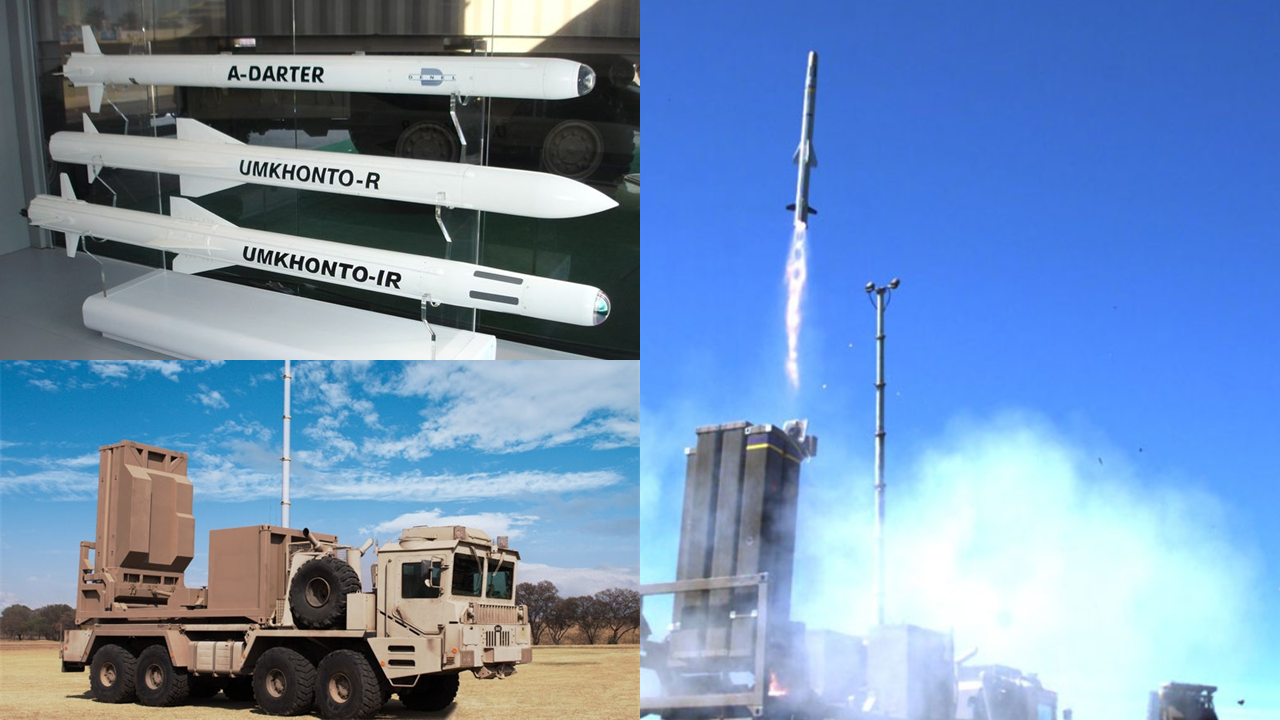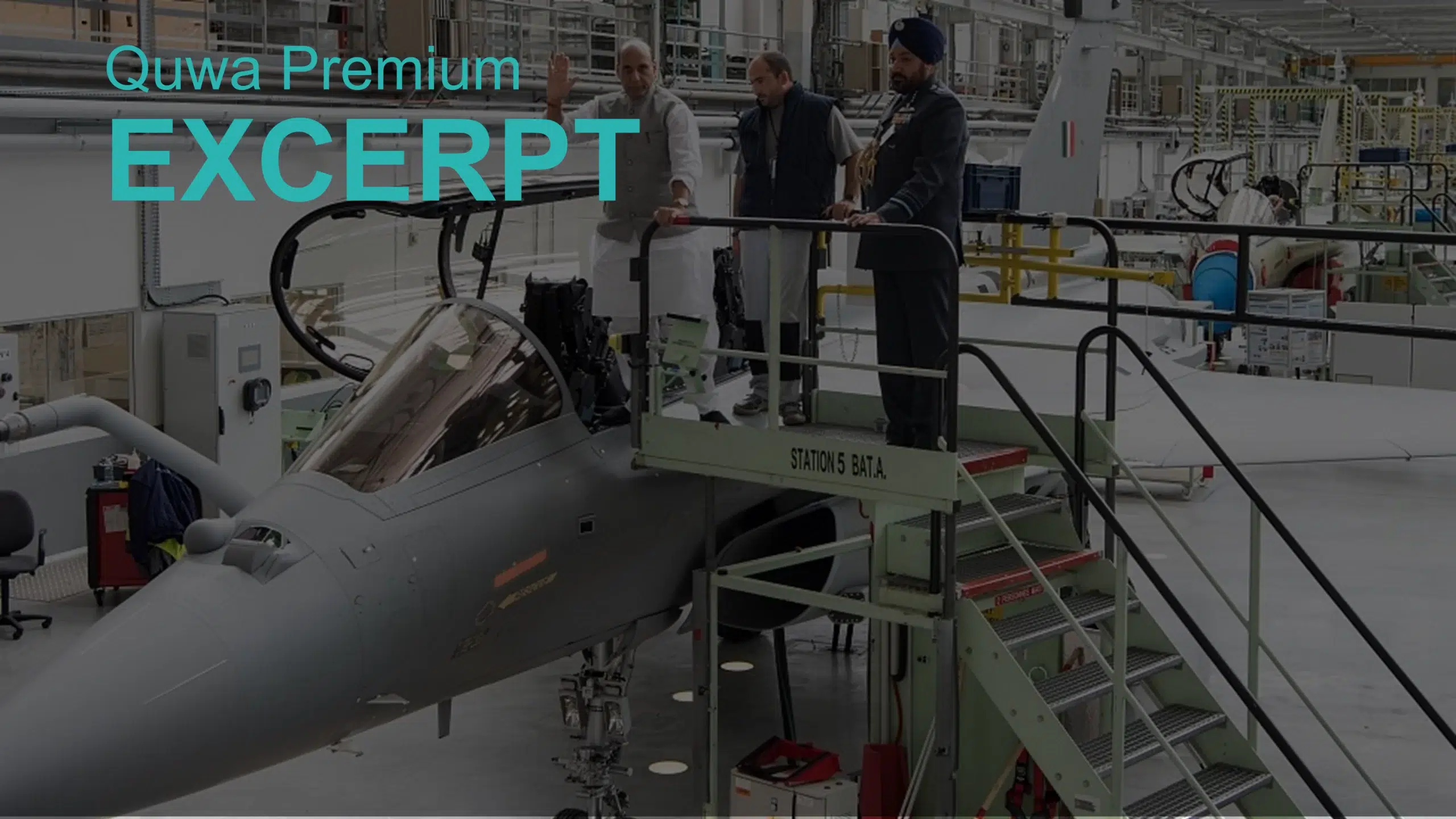2923Views 3Comments

Denel will display the Umkhonto-EIR surface-to-air missile at IDEX 2017
In anticipation of increasing defence expenditure in the Middle East and North Africa, the South African defence giant Denel Group will exhibit its product range at the 2017 International Defence Exhibition and Conference (IDEX), which will take place in the United Arab Emirates (UAE) from 19 February 2017. In fact, the UAE is a particularly important market considering its local industry – i.e. Tawazun Dynamics – is one of Denel’s partners in co-producing and marketing its Tariq (i.e. Umbani) series of precision-guided bombs.
In its official press release, Denel Group announced that it will display Denel Dynamics munitions, Denel Pretoria Metal Pressings’ (PMP) iNkunzi PAW20 handheld grenade launcher, Denel Land Systems’ NTW-20 anti-materiel rifle, DMG-5 machine gun and 60 mm mortar systems. Mock-ups of Denel Aviation’s Rooivalk attack helicopter and Oryx utility helicopter will also be displayed.
One of Denel Dynamics’ emerging programs, the Umkhonto-EIR surface-to-air missile (SAM), will also be displayed at IDEX. The Umkhonto-EIR is an upgraded version of the Umkhonto, a 20-km range imaging infrared (IIR)-guided SAM, which entered service in 2001. Currently, the Umkhonto SAM is used by South Africa, Finland and Algeria, primarily as a naval anti-air warfare (AAW) system.
The Umkhonto-EIR’s main improvement over its predecessor is its range, which is expected to sit from 25 to 35-km, bringing it into the field of short-to-medium-range SAMs such as the MBDA Aster-15. Aside from the range, the Umkhonto-EIR maintains the Umkhonto’s IIR seeker.
Functionally, the Umkhonto (including the EIR) missile will near its target by relying on commands via data-link from its surface radar. When it is sufficiently close (i.e. terminal range), the missile will switch to its IIR seeker and operate independently of the surface radar.
In 2014, Denel Dynamics said that it was “exploring new generation motors and other technology for the EIR version as well as radar seekers planned for the Umkhonto LR.” The Umkhonto-EIR was envisaged as a pivotal stepping stone to the 60-km range Umkhonto LR.
It is possible that the Umkhonto LR is connected to the Marlin program, which aims to offer an analogous solution to the MBDA Common Anti-air Modular Missile (CAMM) platform in that the core missile platform could be used as a SAM or 80-100 km beyond-visual-range air-to-air missile (BVRAAM). Denel is also seeking an outside partner to help support the program.
Denel Dynamics had planned to test the Marlin technology demonstrator in September 2015, but the current state of the program is not known. However, it appears that Denel Dynamics is making sufficient progress in the Umkhonto-EIR, enough to showcase a model of it at a major defence exhibition.
If brought to fruition, the Umkhonto-EIR could be a significant step for Denel Dynamics, enabling it to offer a cost-effective competitor to the MBDA Aster-15 and CAMM, especially in the naval market. The market has a dearth of offerings, and a competitor could bring credible naval AAW solutions to a wider market.
Finland is planning to upgrade its Hamina-class fast attack crafts, and improved AAW is on the roadmap. If the Umkhonto EIR is relatively close, it could be a real contender. Likewise, if the Pakistan Navy intends to equip its current (i.e. F-22P) with upgraded AAW capabilities, or ensure that its possible future ships (e.g. the MILGEM/Ada) have credible AAW systems, the Umkhonto EIR may be an option.
At IDEX 2017, Denel Dynamics will also be exhibiting the A-Darter high off-boresight (HOBS) within-visual-range air-to-air missile (WVRAAM), Mokopa anti-tank guided missile (ATGM) and Cheetah counter-rocket, artillery and mortar (C-RAM) system.
Denel Dynamics developed the Cheetah C-RAM system in collaboration with Rheinmetall Denel Munition and Rheinmetall Air Defence. The Cheetah C-RAM was designed to offer defensibility against disparate munitions artillery munitions fire. With a range of 6 km, the Cheetah is being marketed to militaries set in asymmetrical (e.g. counterinsurgency) operations.
The A-Darter is a HOBS AAM. It is a short-range missile paired with an IIR seeker and is compatible with helmet-mounted display and sight (HMD/S) systems, allowing the pilot to cue the missile to a target with his or her eyesight. It is analogous to the AIM-9X, Python 5, and Advanced Short-Range Air-to-Air Missile (ASRAAM). During the 2015 Paris Air Show, the Pakistan Air Force (PAF) listed the A-Darter as a possible option for the JF-17 Block-III’s HOBS WVRAAM requirement.
Denel Group will be looking to IDEX 2017 (and 2017 in general) to generate major commercial and long-term partnerships. The MENA is a key market, one possibly on the verge of making substantive investment in domestic defence development and production. For Denel Group, in-roads as a supplier and marquee defence partner could help fortify its long-term competitiveness.
For further insight into Denel Group’s business growth efforts, see how the company is collaborating with Saab to offer complete air defence packages with the Umkhonto and Saab Giraffe AMB radar.



3 Comments
by Sajid Ehsan
Hello Bilal and all commentatotrs, it’s really awsome forum, keep it up. Anyone who can read comments can have extensive knowledge and understanding of the how warfare is carried out. Bilal I maybe going off the Grid but why can’t we have some topics on foreign policy effects on military industry too.
I was just wondering to ask you Bilal and other that what is minimum requirement for a good air defence currently. What should a country posses or have ability to posses to have a good air defence. From aircrafts to Sam’s, radars etc. Thanks
by Bilal Khan
Hi Sajid,
Regarding foreign policy on military industry… The issue with such a topic is that irrespective of the research one takes to understand the specific details, the underlying cause is generally known to people (i.e. governance). Regarding air defence, it’s tough to offer an article for countries in general terms, every state has different challenges and needs. If you are talking about Pakistan, you’ll find me touching on the subject in a few articles, e.g. http://quwa.org/2016/08/17/pakistans-hq-16-surface-air-missile-plans/ … and … http://quwa.org/2016/03/15/pakistans-c4isr-part-2-land-airborne-surveillance-systems/
by Matthys Jacobs
In my view Denel and South Africa would benefit with Pakistani involvement.
Both countries have synergies which should be worked on.